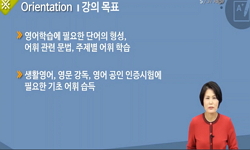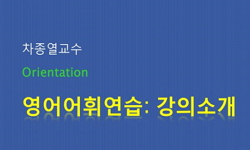본고에서는 먼저 語彙를 再構하고 이를 토대로 古代國語의 音節構造를 推定하는 것이 方法論的으로 妥當하지 않음을 究明하였다. 形態를 재구할 때는 이미 음절구조를 前提해야만 가능하...
http://chineseinput.net/에서 pinyin(병음)방식으로 중국어를 변환할 수 있습니다.
변환된 중국어를 복사하여 사용하시면 됩니다.
- 中文 을 입력하시려면 zhongwen을 입력하시고 space를누르시면됩니다.
- 北京 을 입력하시려면 beijing을 입력하시고 space를 누르시면 됩니다.

고대국어(古代國語) 음절구조(音節構造) 재구(再構) 방법론(方法論)과 음절구조(音節構造) = A Reconstructing Method of Syllable Structure and Ancient Korean Syllable Structure
한글로보기https://www.riss.kr/link?id=A105191510
- 저자
- 발행기관
- 학술지명
- 권호사항
-
발행연도
2007
-
작성언어
Korean
- 주제어
-
KDC
810.5
-
등재정보
KCI등재
-
자료형태
학술저널
-
수록면
29-52(24쪽)
- 제공처
- 소장기관
-
0
상세조회 -
0
다운로드
부가정보
국문 초록 (Abstract)
본고에서는 먼저 語彙를 再構하고 이를 토대로 古代國語의 音節構造를 推定하는 것이 方法論的으로 妥當하지 않음을 究明하였다. 形態를 재구할 때는 이미 음절구조를 前提해야만 가능하며, 재구된 형태는 이미 전제된 음절구조에 맞게 재구될 수밖에 없다. 따라서 재구된 어휘의 音節形을 토대로 古代國語의 음절구조를 추정하는 것은 방법론적으로 타당하지 않다. 나아가 고대국어의 음절구조가 中世國語와 마찬가지로 閉音節 構造였음을 밝혔다. 中世國語가 古代國語의 연장선에 있다고 할 때 중세국어의 여러 言語的 事實들은 고대국어가 폐음절 구조였음을 보여준다. 첫째, ‘-m, -n, -l’ 動名詞語尾의 존재, 둘째, 末音添記字의 運用 方式의 유사성, 셋째, 고유어 어휘의 개음절형과 폐음절형의 비율, 넷째, CV<sub>1</sub>.CV<sub>2</sub>에서 V<sub>2</sub>가 //, /ㅡ/ 모음인 어휘들의 존재가 그것이다. 이 사실들은 古代國語의 音節構造가 폐음절 구조였다고 할 때 비로소 說明이 가능하다.
다국어 초록 (Multilingual Abstract)
In this thesis, I proved that it isn't appropriate that induced the syllable structure of ancient Korean through a form of reconstructed vocabulary. When we reconstruct vocabulary, we presume syllable structure already. As that, reconstructed form is ...
In this thesis, I proved that it isn't appropriate that induced the syllable structure of ancient Korean through a form of reconstructed vocabulary. When we reconstruct vocabulary, we presume syllable structure already. As that, reconstructed form is suited properly to a syllable structure that is presumed already. Therefore, it isn't appropriate that induce syllable structure of ancient Korean through a form of reconstructed vocabulary. And I proved that ancient Korean syllable structure was closed-syllable as that of middle korean. Linguistic facts of the middle Korean is said evidently that ancient Korean syllable structure was closed-syllable. It is following that is First, the existence of a gerund ending ‘-m, -n, -r’, second the similarity of inserting alphabet of syllable final, third the higher rate of closed- syllable form at native words of one and two syllable, forth the existence of words that V<sub>2</sub> is /Λ/ and /i/ at CV<sub>1</sub>.CV<sub>2</sub>. It is possible to explain these facts only when we say that ancient Korean was closed- syllable structure.
동일학술지(권/호) 다른 논문
-
近代 女性文學의 형성 원리 연구-정전의 形成과 ‘女性性’의 制度化 過程을 중심으로-
- 한국어문교육연구회
- 김양선
- 2007
- KCI등재
-
- 한국어문교육연구회
- (임기중)林基中
- 2007
- KCI등재
-
- 한국어문교육연구회
- (오윤호)吳潤鎬
- 2007
- KCI등재
-
金剛山 紀行詩歌의 山水 형상화 양상-栗谷의 「遊楓嶽」과 松江의 「關東別曲」을 중심으로―
- 한국어문교육연구회
- (김광조)金光朝
- 2007
- KCI등재




 KCI
KCI KISS
KISS







